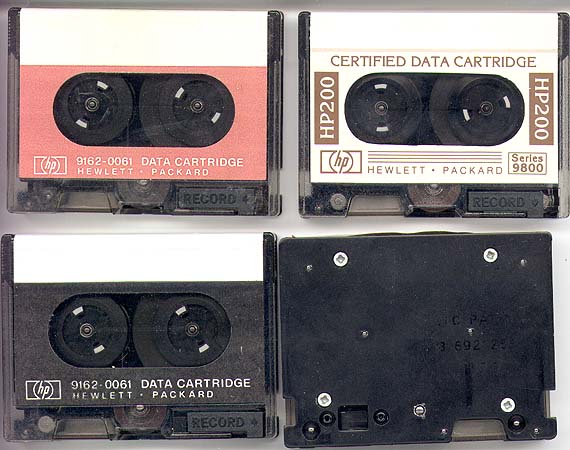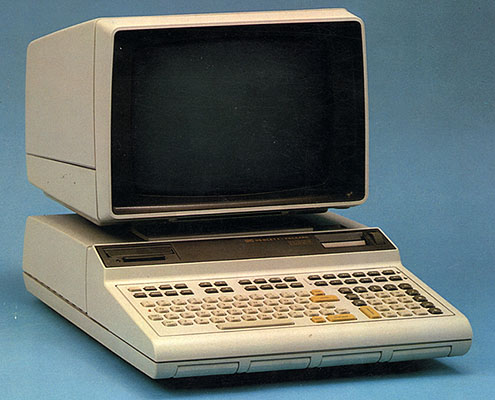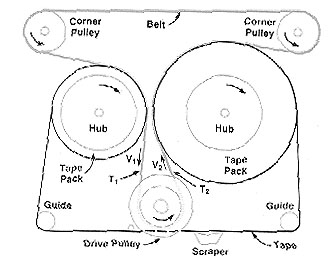| Re: Reading HP9800 tapes Message #2 Posted by Vassilis Prevelakis on 7 Oct 2003, 9:05 p.m., in response to message #1 by Jean-Louis Dornstetter OK, first the tapes, do they look like these?
According to your description, the computer cannot be a 9825 since this one has only a one line LED display. So you are either thinking of a 9835, like this one:
Or (most likely as this one can have two tape drives) an 9845. This is not the best picture, but its the only one I could find:
Now the bad news, your tapes are probably long gone -- destroyed by age. Assuming that you can find a working 9845 you may have a single chance at reading the data off the tape, but before you do that, you have to make sure that a) the rubber belt that moves the tape still works. You will have to open the tape housing and look inside. If the belt is broken or about to break you will have to replace it with one from a working tape (preferably manufactured the past 10 years). This is a not so good picture of the internals:
b) Make sure that the tape is not stuck on itself. Carefully wind (manually) the tape from end to end (DO NOT USE A RE-TENSION COMMAND) checking to see whether the oxide stays on the correct part of the tape. If the oxide is falling off or sticking to the back of the tape, then your tape is gone. Assuming that the tape passes the above two tests you should assume that you have ONE chance of copying the data. Have another tape or (preferably) a disk (diskette or hard) ready to accept the contents of the old tape and PRACTICE the copy operation a couple of times with ANOTHER TAPE. If everything looks OK, insert the original tape, say something comforting to the machine in a friendly and stress-free voice and good luck. **vp The pictures above are from the Classic Computers web site www.classiccmp.org.
|



